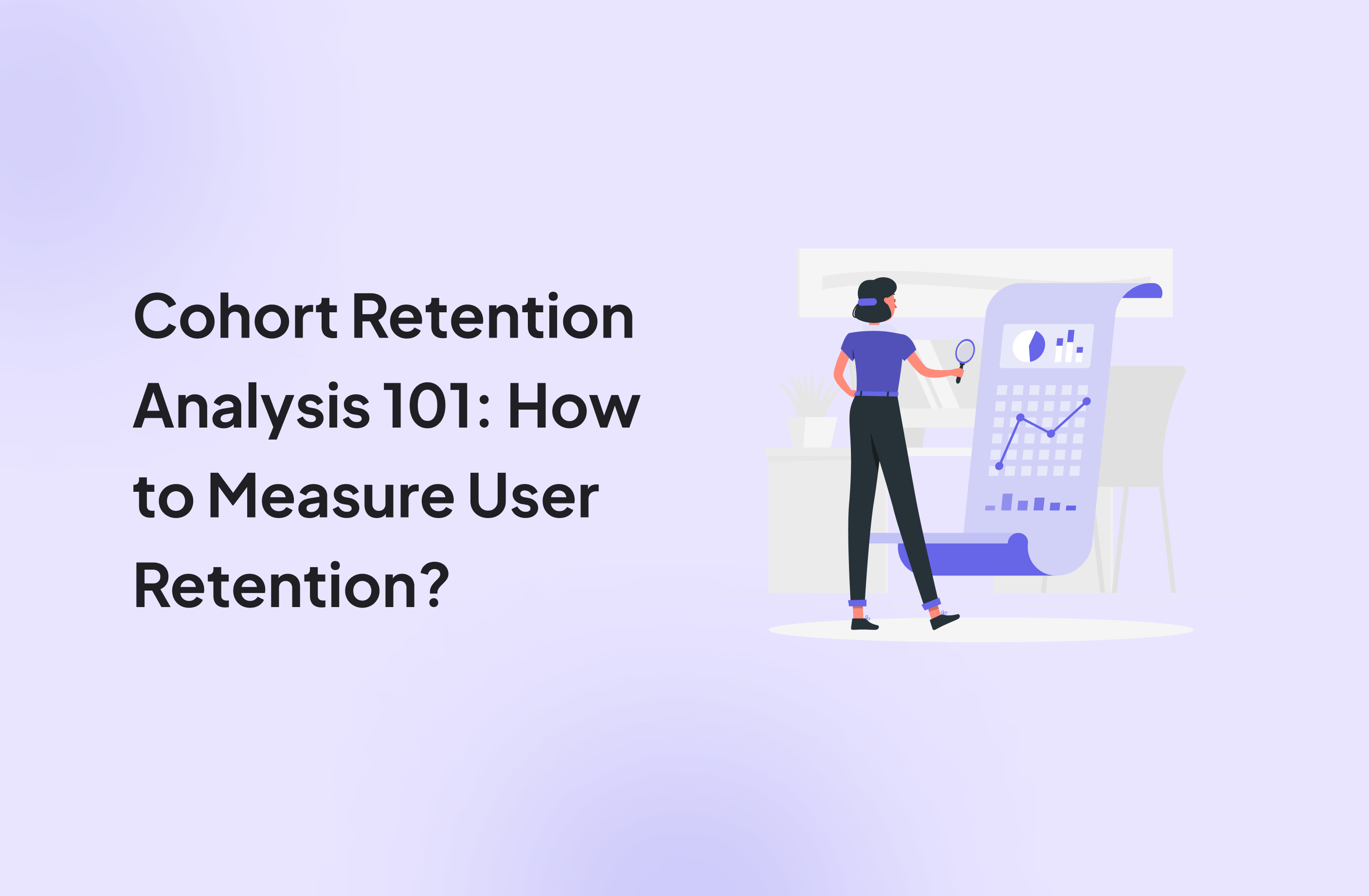
What is cohort retention analysis? And how do you leverage it to reduce churn, including early churn through improved user onboarding experiences, and boost your retention rates?
These are the main questions I will break down in this article, plus share a few intuitive tools to get the job done.
Get The Insights!
The fastest way to learn about Product Growth, Management & Trends.
What is cohort retention analysis?
Cohort retention analysis is the process of tracking user engagement with the product over time. However, instead of looking at the user population as a whole, it looks at specific user groups linked to specific events or timeframes.
Have a look at the cohort analysis table below.
The users are grouped into daily cohorts, based on when they subscribed to the product.
From the chart, we can easily see that the retention rate for users who subscribed to the product on October 20, 2023 is 51.1% after 2 days, 85.1% after 4 days, and so on.
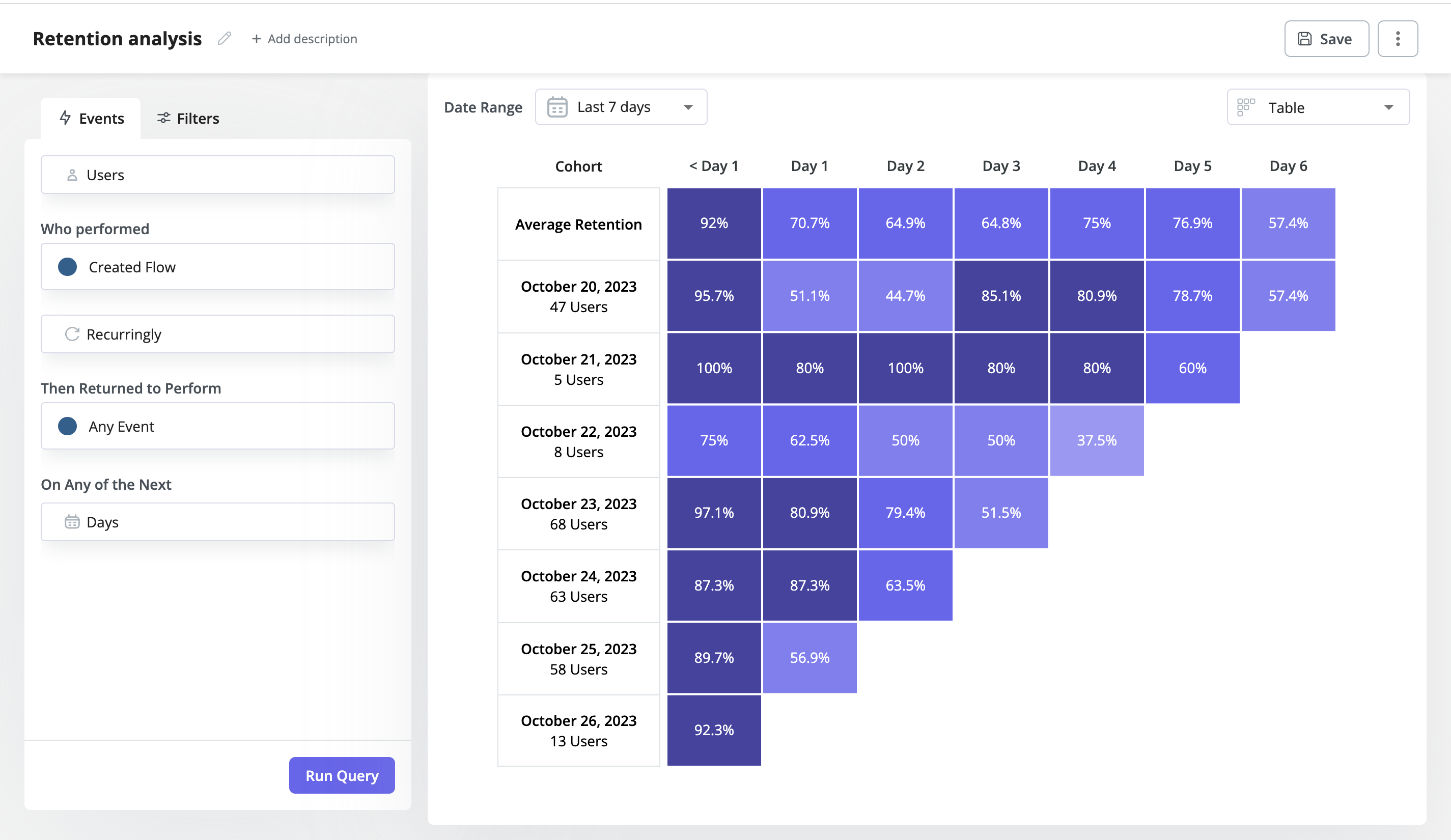
Why use cohort analysis to measure customer retention?
There are a number of benefits of using cohort analysis to track customer retention. Here are a few key ones:
- By measuring how well different groups are retained, cohort analysis helps you evaluate your retention strategies, identify the most successful ones, and make data-driven decisions to and improve your retention efforts.
- Cohort analysis enables teams to track and analyze customer behavior over a specific period and gain insights into long-term behavior trends.
- With cohort analysis, you can compare retention rates for different cohorts and identify behavior patterns or product changes that could be impacting them, like the frequency of use or updates.
- By analyzing cohort retention rates, SaaS businesses can establish the lengths of the customer relationship, predict the customer lifetime value, and use them to forecast future revenue.
Different types of customer retention cohort analysis
There are three key types of cohort retention data analysis: acquisition cohort, behavioral cohort, and predictive cohort analysis. Let’s break them down and explore how each one can drive better retention insights.
Acquisition cohorts
Acquisition cohort analysis divides users into cohorts based on acquisition events. Examples of acquisition events include signing up for the product or subscribing to a paid version.
This kind of analysis allows organizations to identify long-term retention patterns for each cohort and compare the effectiveness of various retention strategies over time. It also enables them to evaluate the impact of their acquisition and marketing campaigns.
Behavioral cohorts
Behavioral cohorts are made up of users who have or haven’t completed a specific event within a specific time frame. For example, you could group your users based on whether they completed the onboarding checklists or not.
Behavioral cohorts analysis gives teams more granular insights than user acquisition cohorts because it tells them not only how many users have been retained but also why.
Prediction cohorts
Prediction cohorts are groups of users who are likely to show certain behaviors or patterns in the future, like churn. They are built using machine learning algorithms to analyze historical behavior data.
This type of cohort analysis enables teams to predict user behavior and act proactively to change it. For example, they could use them to maximize upsell opportunities by engaging users with contextual in-app messages.
How do you calculate cohort retention?
To calculate the retention rate, you divide the number of active users within a time period by the total number of users in the cohort.
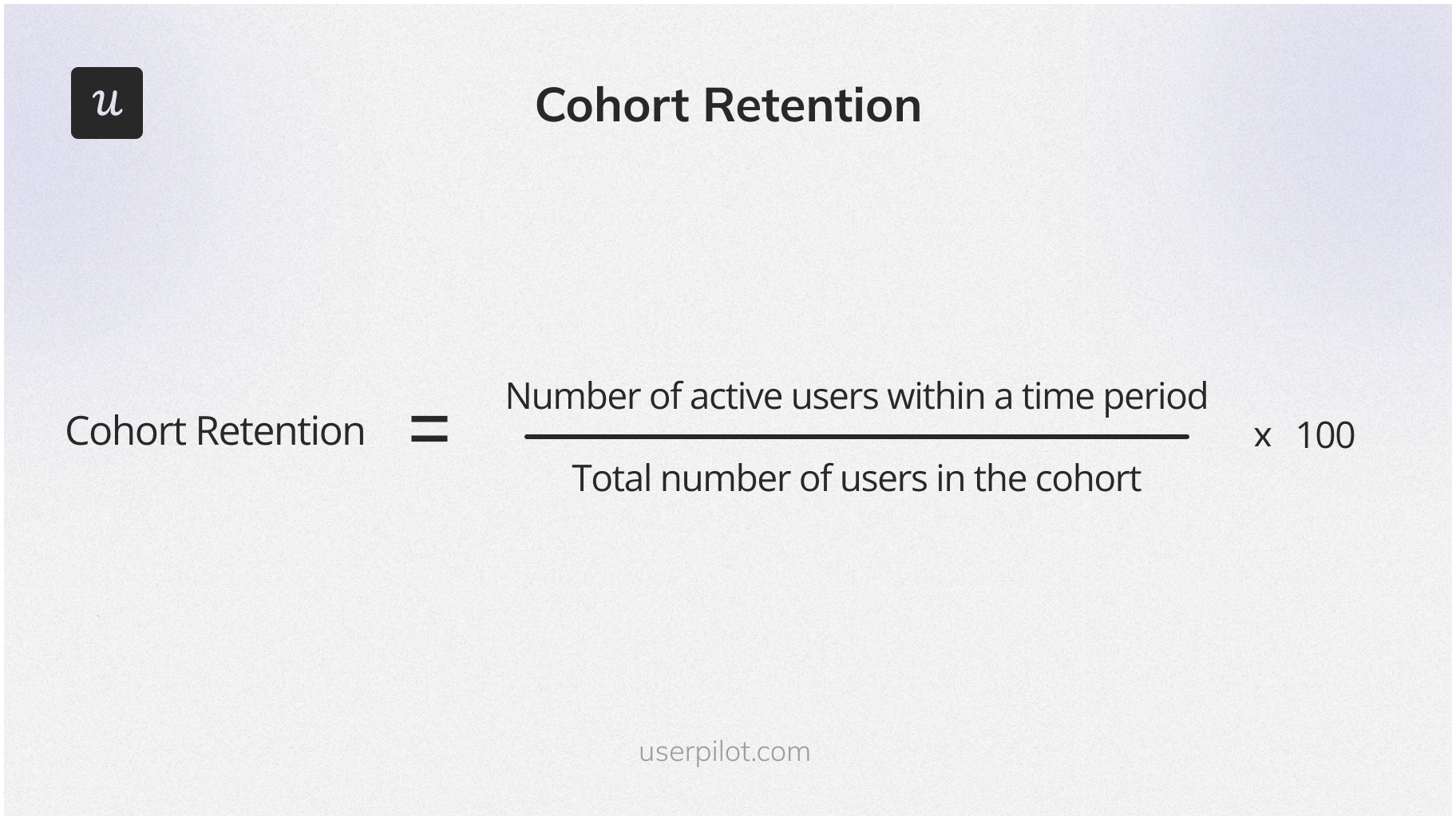
So if we go back to the retention table above, 47 users subscribed to the product on October 20, 2023. That’s the total cohort size. On Day 1 (2nd day), there were 24 active users. Dividing 24 by 47 gives us a cohort retention rate of 51.1%.
What is a retention cohort analysis example?
Let’s imagine you’re a product manager or product owner of a social media automation tool, like Hootsuite. You want to identify user behaviors that affect their retention.
One of your hypotheses is that users who connect to a social media account have a higher retention rate.
You start the analysis by choosing an acquisition cohort, like the new customers who signed up for the product in January 2023.
Next, you break down the cohort into two behavioral cohorts: those who have connected to a social media account and those who haven’t.
After that, you have to plot the two cohort data over a specific time period and compare them. If there’s a big discrepancy between the two, your hypothesis may be right.
All that is left to do is act on the insights. For example, you could ensure that users do add their social accounts by adding the task to the new user onboarding checklist or prompting existing customers with in-app messages.
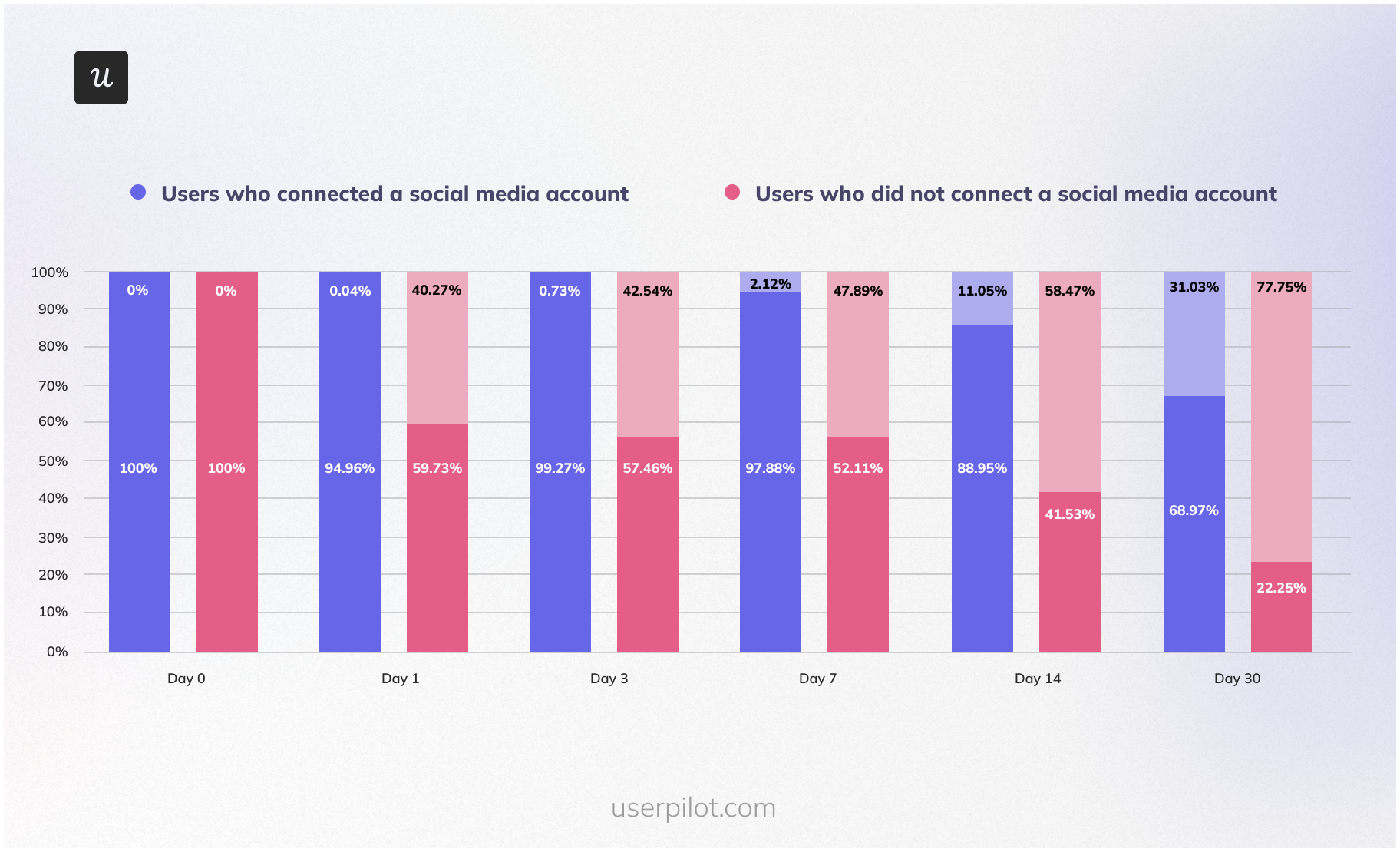
How to analyze cohorts to improve the customer retention rate?
The example above shows you how cohort analysis can help you improve your retention figures. Let’s look at different ways you can leverage your own cohort analysis to streamline your customer retention strategy and boost customer retention rates.
Measure the effectiveness of new users’ onboarding experience
The quality of user onboarding will have an impact on your retention figures.
So what can you do if you see user engagement drop dramatically within 2 weeks of signing up for the product?
First, choose the acquisition cohorts that clearly show the trend. How are they different from others where the drop is not so significant? Were there any changes introduced to the onboarding process before you started experiencing the drop?
If yes, they could be the culprit.
If not, you may need to look at user engagement with the onboarding assets in more detail.
Start by breaking down the acquisition cohorts into two user segments: retained customers and churned ones. Next, use your product analytics to compare their engagement patterns. I recommend using funnel analysis to compare conversion rates between the two segments at each step of the onboarding process.
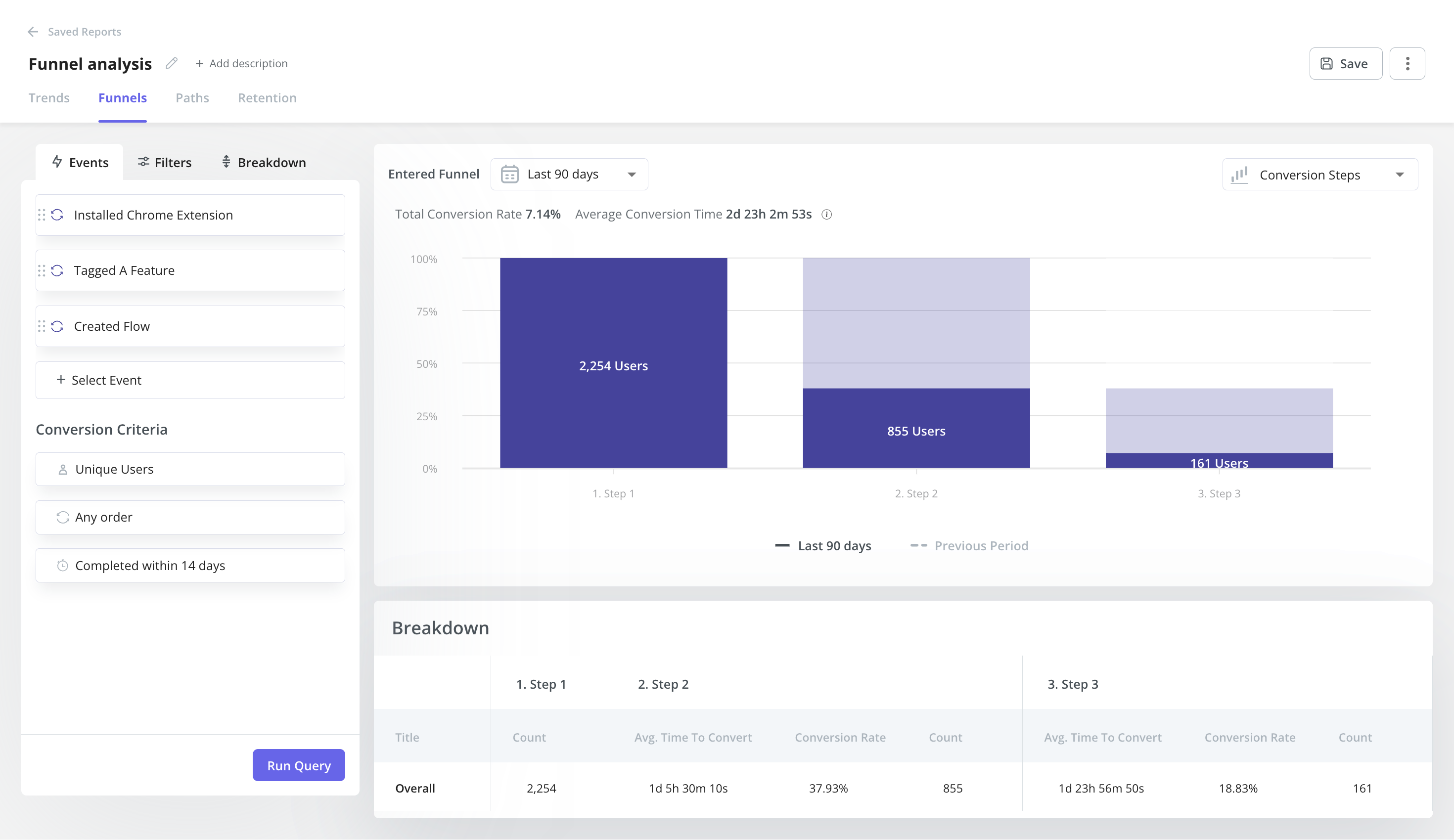
Pinpoint successful behaviors that increase user engagement and retention
You can use a similar process to identify successful user behaviors that are correlated with higher retention rates.
First, use acquisition cohort analysis to identify the most successful users.
Next, analyze their behavior patterns in detail using your analytics tool. Pay attention to the behaviors that distinguish them from the churned users. To ensure consistency, look at the same period of time for each cohort, for example, the first 2 weeks or a month.
In the same way, you can identify churn warning signals.
Once you’ve identified these specific behaviors, you can create custom events and then visualize their impact on a retention curve to verify your findings. Userpilot’s trend analysis feature allows you to do just that.
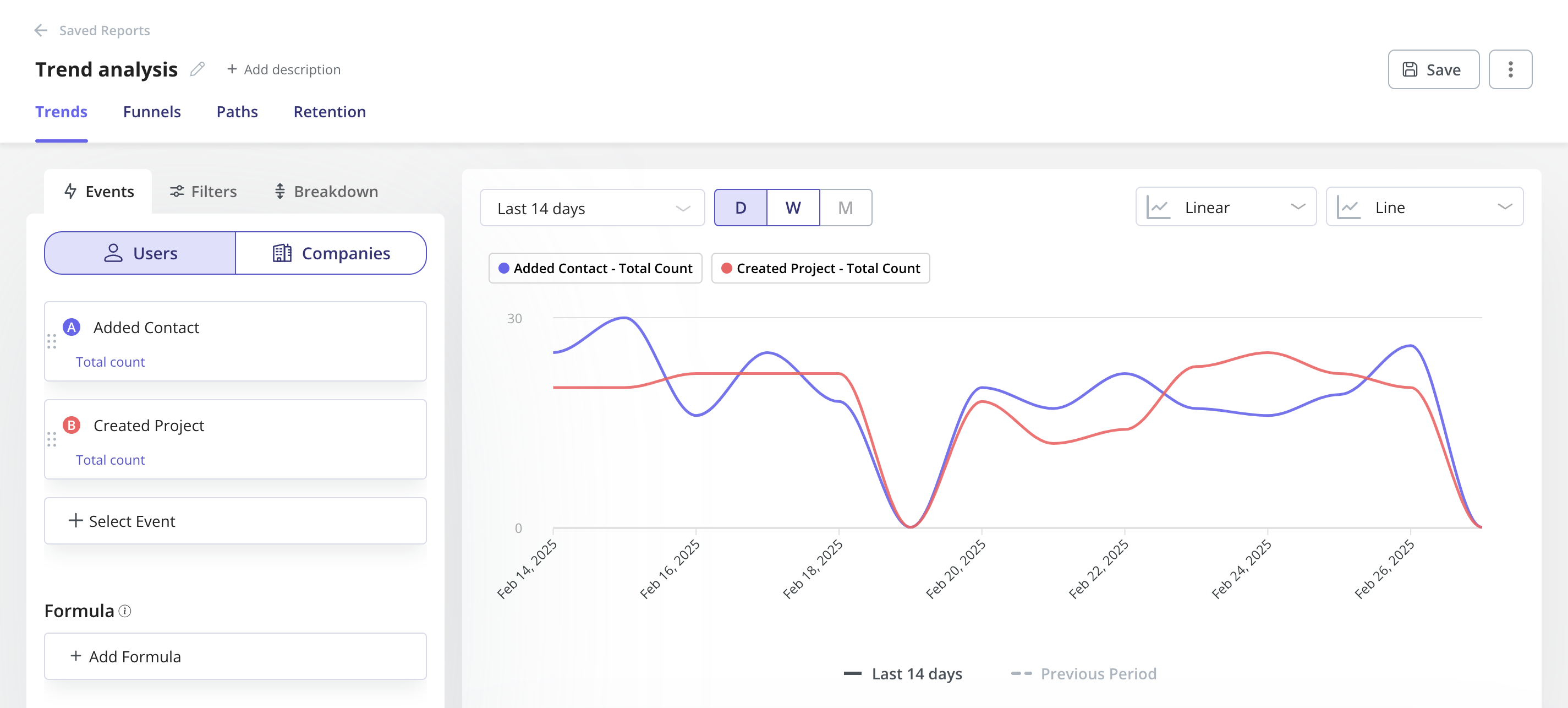
Identify drop-offs in the user journey
Identifying the drop-off points in the user journey is the first step when tackling declining retention.
To identify such drop-off points, all you have to do is plot the retention curve for a particular acquisition cohort. For example, with the social media automation tool, you could plot their daily engagement.
The curve will show you immediately when the users experience friction. This could be after a day, two, or five. However, it won’t tell you why users drop off.
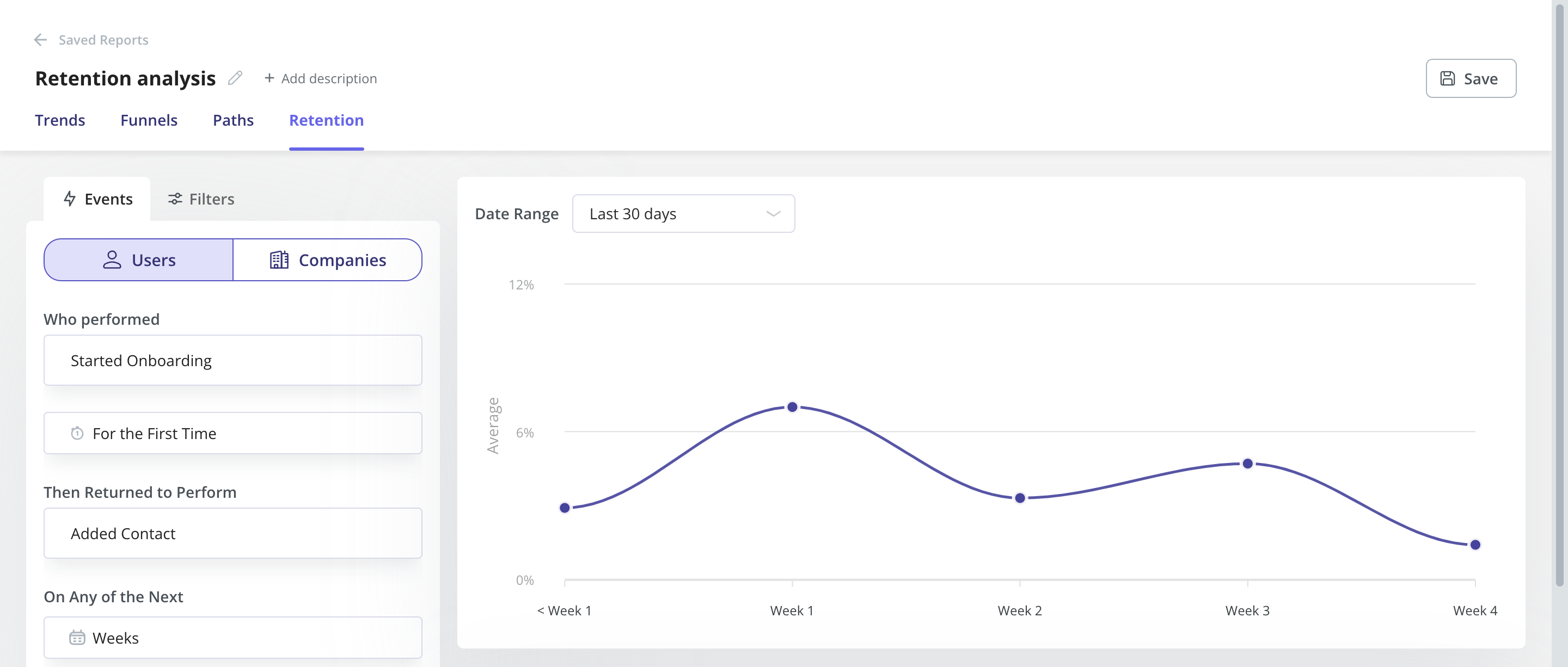
For that, you will need to look at customer behavior in more detail using session replays to understand if they’re facing friction, rage clicking on a button, or failing to take the next step.
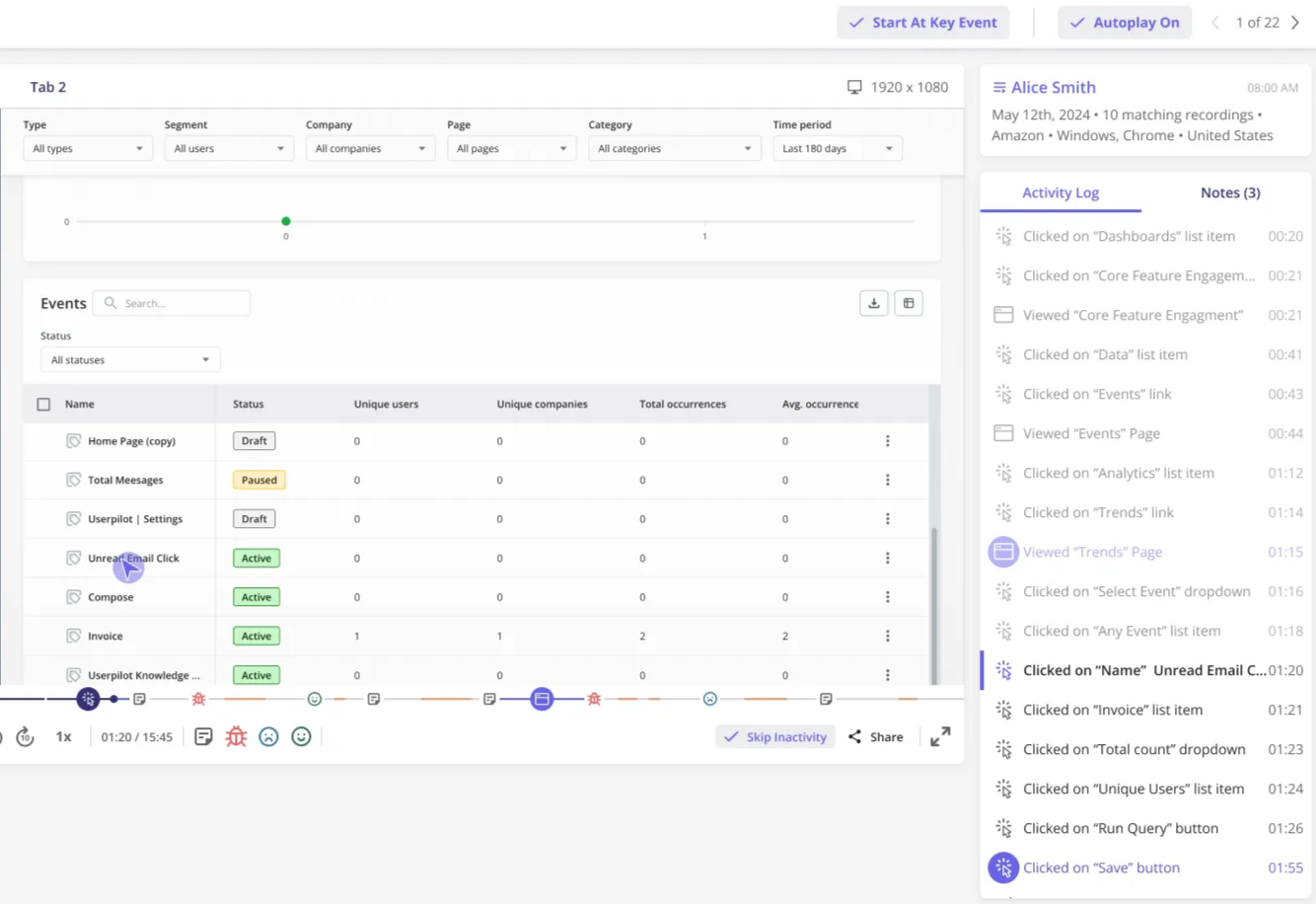
Track how a new feature launch impacted retention rates
Let’s imagine that you’ve launched a new feature in May and hope that this will increase your retention rate.
Start by looking at acquisition cohorts from May onwards. We can see that the retention rate has indeed started growing since the new feature launch.
Does it mean that the increase can be attributed to the new feature? Not quite.
Correlation is not the same as causality. The retention boost could be a pure coincidence or there could be other factors that have had an impact.
To test your hypothesis, you need to dig a bit deeper and use product analytics to analyze the engagement with the feature.
If the retained users engaged with the feature, it may be the reason for the improved retention data, assuming there were no other significant changes to the product introduced at the same time.
The best cohort analysis tools for measuring retention
Now that we know how to carry out cohort retention analysis, let’s check out a few tools that will help you do it.
Userpilot
Userpilot is a digital product growth platform with a number of important features that will help you drive user engagement and retain customers.
The application offers a cohort retention analysis feature whereby you can measure (and improve) retention easily. Not only can you view the cohort table, but also view the retention curve. You can even filter the retention data by the number of web sessions, price plans, etc. to analyze retention in detail.
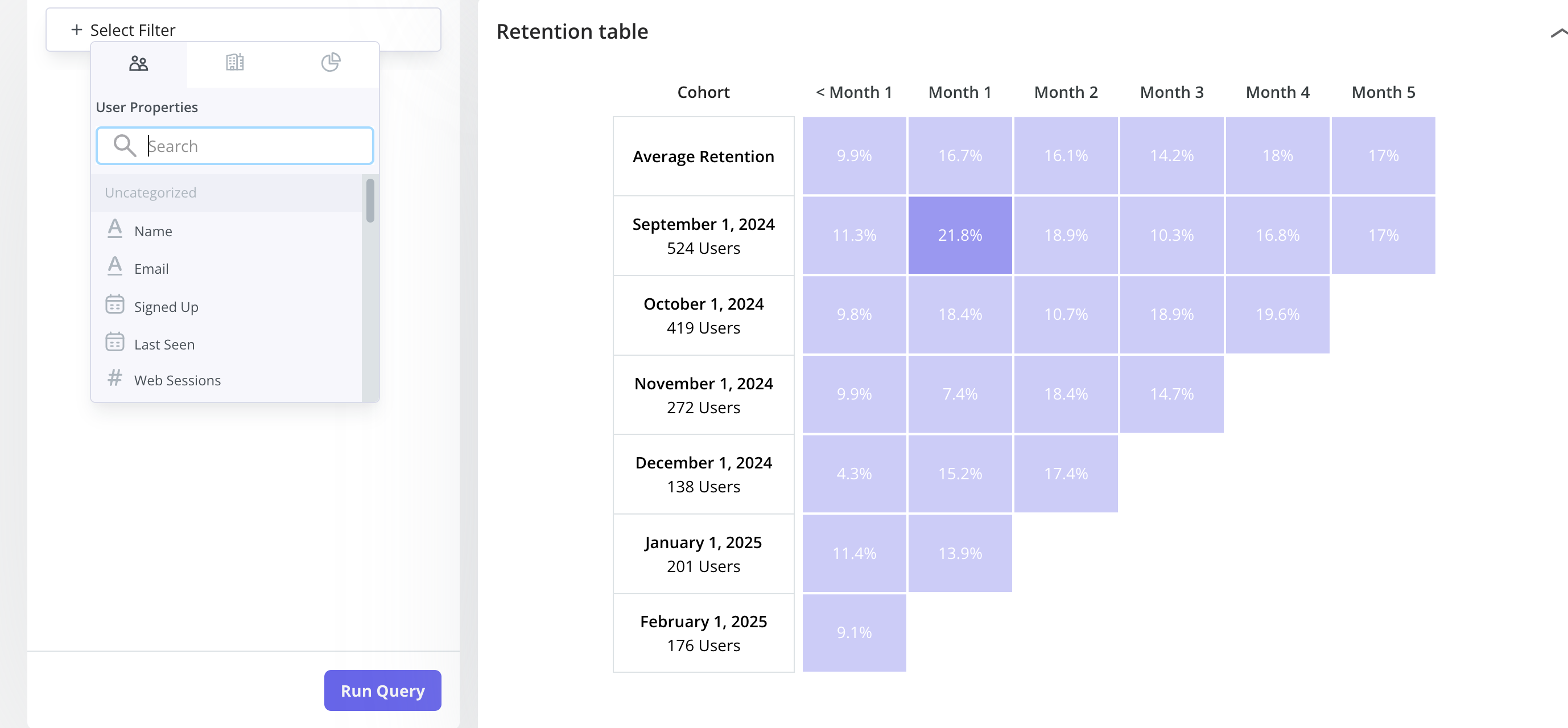
What makes Userpilot a great tool for analyzing retention is that it hosts a number of features for you to understand the what behind the user behavior and the why. Some of its advanced analytics features include: session replays, autocapture, funnel/trend/path analyses, dashboards, and more.
Apart from the analytics features, Userpilot allows you to design and trigger bespoke in-app experiences to onboard and engage your users. So you not only gather the insights but also act on them.
Here’s what one customer has to say about Userpilot:
It does well what Google Analytics should have been doing. Instead of just being a mesh of data points, it provides actual useful insights about your metrics. Easily creating and analyzing funnels, cohort retention, and seeing analytics about particular flows.
Amplitude
Amplitude is a dedicated product analytics platform. As you may expect from a tool of this caliber, Amplitude supports retention analysis.
Analyzing and visualizing retention trends with Amplitude is fairly straightforward. You can easily choose the acquisition event as well as the return event. You can also customize the acquisition date and observation intervals (daily, weekly, etc).
The app calculates the retention data for you and plots it in the retention graph. The data is also available in a retention/cohort table. You can also compare the data for different behavioral cohorts.
Other important Amplitude analytics features include:
- Milestone analysis/goal tracking
- Funnel analysis
- Impact analysis and conversion drivers
- Pathfinder
- Root cause analysis
To be able to act on the insights, you will have to rely on integrations with 3rd party apps because Amplitude doesn’t offer any engagement features.

Google Analytics
Google Analytics is one of the best-known website and application analytics tools.
Just like Amplitude, it supports cohort retention analysis.
You can easily customize the parameters for analysis (cohort type, cohort size, metric, data range). GA calculates all the rates for you and visualizes it both in a graph and retention table.
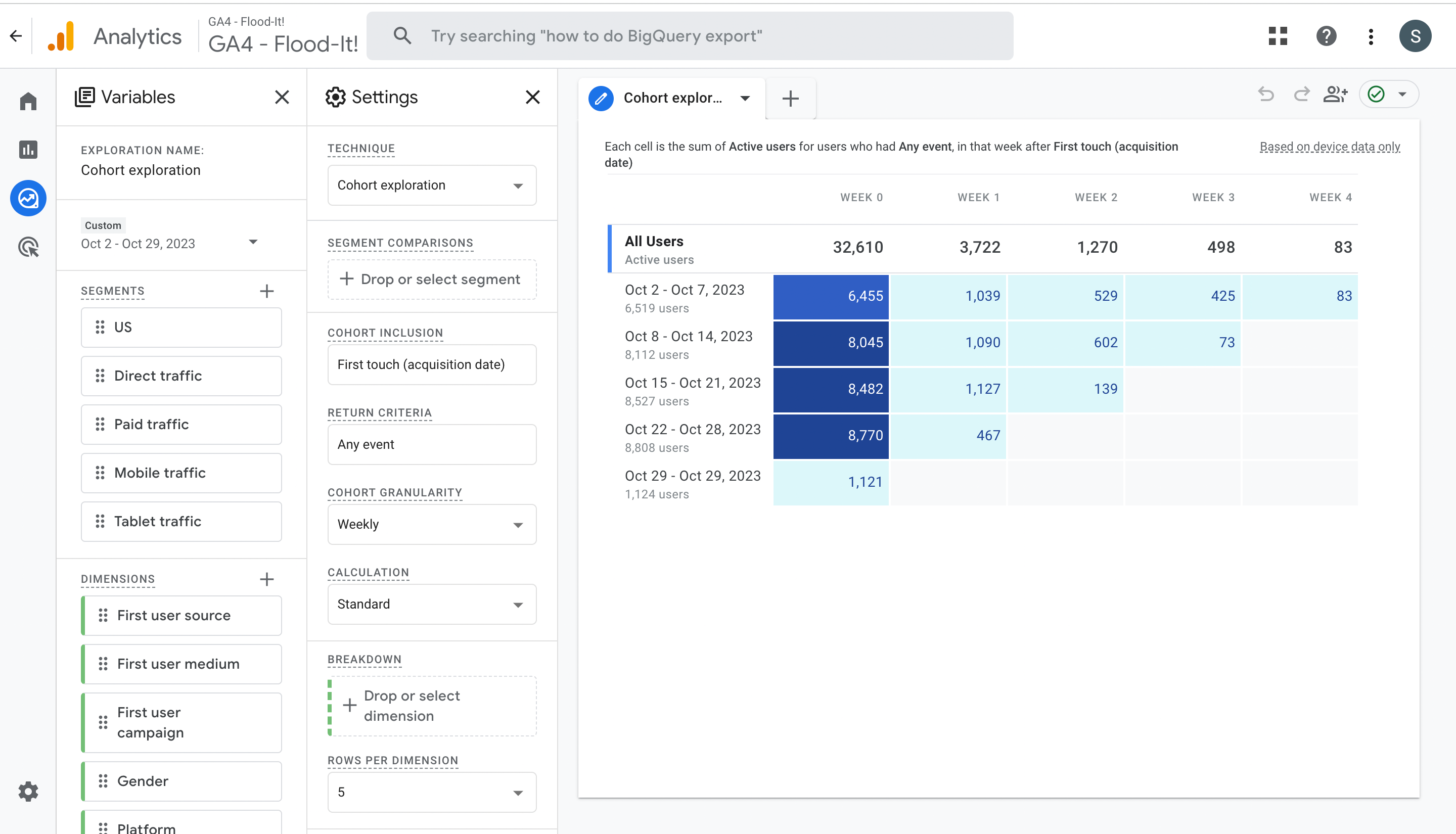
Ready to conduct cohort retention analysis?
Cohort retention analysis is an essential tool for product and marketing teams aspiring to reduce customer churn and maximize customer lifetime value.
With Userpilot, you can perform no-code cohort retention analysis while also uncovering the reasons behind user behavior. Book a demo to see the tool in action.







